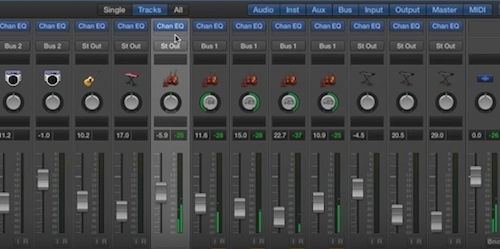
Music production is one of those strange disciplines that combines craft with art, making it notoriously difficult to spell out just what it takes to create good music. Whilst you can learn the technical side by reading and practising, the imagination required to elevate your productions from simple competence to truly rewarding for listeners, is not something you can just pick up from a textbook. Talk about frustrating!
It seems that some are born with the gift of artistic creativity but that doesn't mean there's no hope for the rest of us - one method we can use to try to uncover the secrets of artistic creation is as old as music itself: learn from the masters!

Often, it's those who break the rules and are able to think outside the box that find themselves making memorable music. So, by putting the two together, if we study distinctive music and figure out what makes it tick, it might spur on our own ideas for how to take our sound in new directions.
With this in mind, I want to take a look at 4 tracks that bend and break the normal order and makeup of music production, in the hope it'll help spark some ideas for you to try out in your own music. Let's dive in!
1. Burial - Archangel
My first example may seem like something of an obvious choice, now that his sound has been copied and imitated across genre divides for years now. However, when Burial first released his only 2 albums to date back in 2006 and 2007, they captivated listeners with their strange blend of UK garage, found sound, pop vocal samples and bursts of vinyl static.
In the lead track from Untrue, 'Archangel', Burial tore up the production rulebook with his use of pitch shifting and micro-editing on vocal samples taken from Ray J's 'One Wish'. In opposition to a traditional vocal lead, where melodic lines are created by a single voice, in a single register, the vocals here are chopped, scrambled and broken down into small blocks which are then recombined to form melodies outwith those contained in the original sampled track.

Burial also pitch shifts on the scale of words rather than entire samples, allowing him to have full control over each note in his melody - just listen to the word 'alone' at 0.23, which has been shifted separately from the preceding 'couldn't be'. Listen also to all the examples of the word 'you', first featuring at 0.14, where the 'you' is shifted down an octave from the preceding 'holding' and 'loving'. This creates a weird, otherworldly effect that totally fits in with the track's odd, murky and mysterious atmosphere.
2. Ultraista - Smalltalk (Four Tet Remix)
Vocals don't always have to be used purely as the lead melodic and lyrical force in a song, however. In Four Tet's excellent remix of Ultraista's 'Smalltalk', the producer uses elements of the lead vocal to create supporting melodic and harmonic parts that compliment and, in some cases, take over from the main vocal.
By looping small sections of the vocal and pitching them around, Four Tet constructs riffs, such as that which first appears at 1.20, and melodic phrases, like at 2.26, that might more typically have been created using synths, guitars, pianos etc.
3. Knxwledge - So[rt]
Thinking outside the production box doesn't always mean totally rewriting the rules, of course. Knxwledge's 'So[rt]', which eventually found its way onto Kendrick Lamar's critically acclaimed album To Pimp A Butterfly as 'Momma', creates interest simply by featuring a found percussion sample where something else might have been expected. The beat features a clanging sound occurring on the final offbeat of the first bar, first heard at 0.06, something like the sound of striking a ceramic pot.
As the sound is short, percussive and relatively high pitched, it acts as a rhythmic counterpart to the kick drum, just as a snare hit would also when placed within the context of a more traditional drum beat. Knxwledge's use of this stranger sound gives his drum pattern a unique, memorable edge, however - in fact, using unusual percussion sounds has become something of a trademark of Knxwledge's music, showcasing how effortless and easy it can be to break free from the iron grip of the drum machine in Hip Hop!
Check out our guide on how to record your own found sounds, or pick up some of our own professionally produced samples in our Raw Material and Undercover packs to get started with this technique.
4. Radiohead - Pulk/Pull Revolving Doors
My final example comes from a band less revered for their contributions to electronic music, than for their innovative studio recording techniques. Regardless, Radiohead's 'Pulk/Pull Revolving Doors' from their Amnesiac album features a glitchy, electronic drum beat reminiscent of what you might expect to hear in classic British IDM.
The beat is unusual however in that it seems to feature two parallel tracks triggering the same drum samples, panned hard left and right, with the two parts interacting with each other to create rhythmic counterpoint. This technique gives the beat an exciting unpredictability and fluid spatial dimension, which drum tracks typically avoid (how many times have you panned a kick sample anywhere other than dead centre, for example').

This rhythmic part keeps you guessing, creating a dense, overwhelming effect achieved primarily by Radiohead's use of an unconventional production technique. Inspired!
I hope you've found the above musical examples and subsequent breakdowns as inspiring and useful to your creative process as I have - think about them, try them out for yourself and see if they lead you on to something new and exciting. Happy music-making and get creative!














